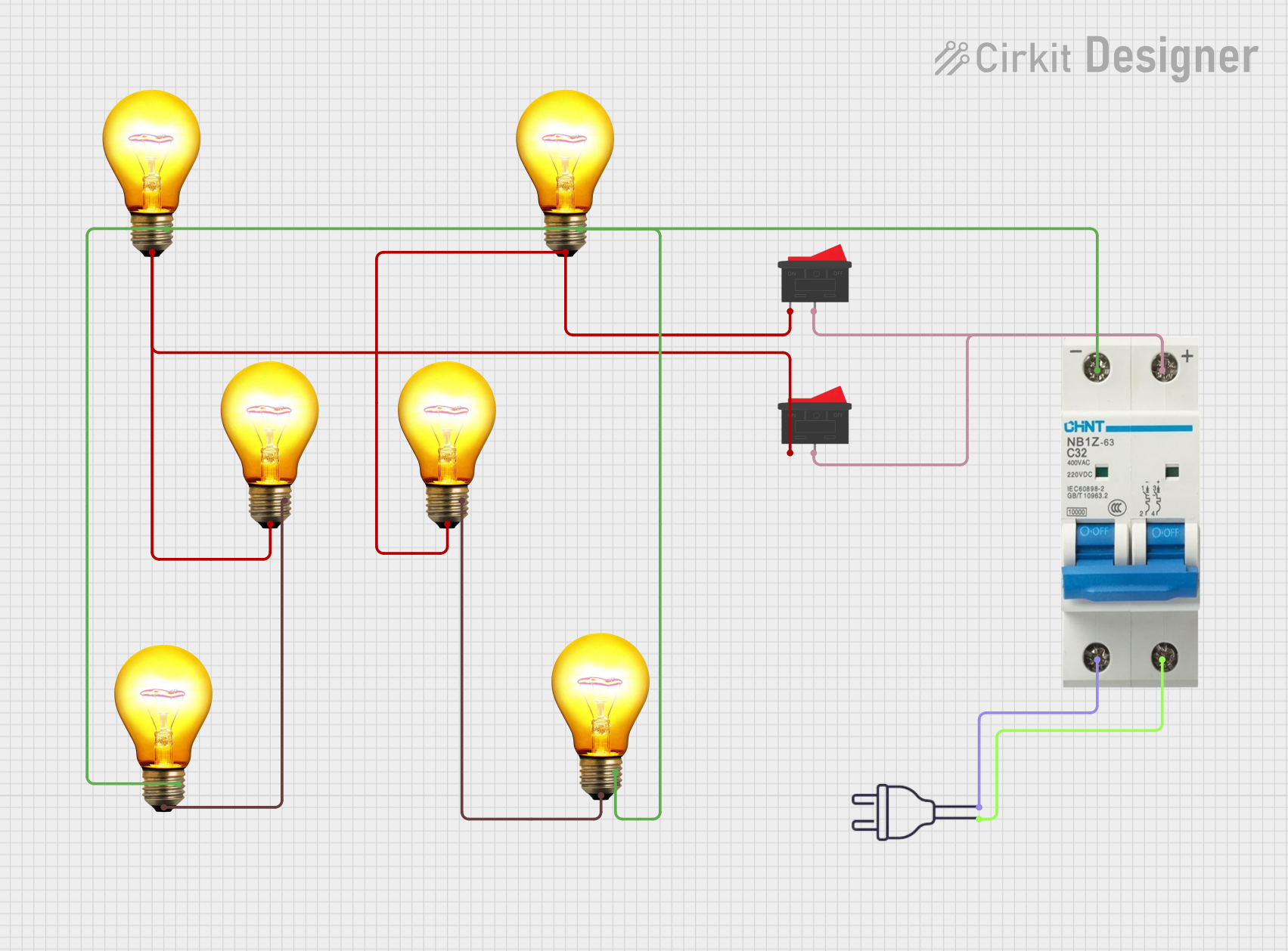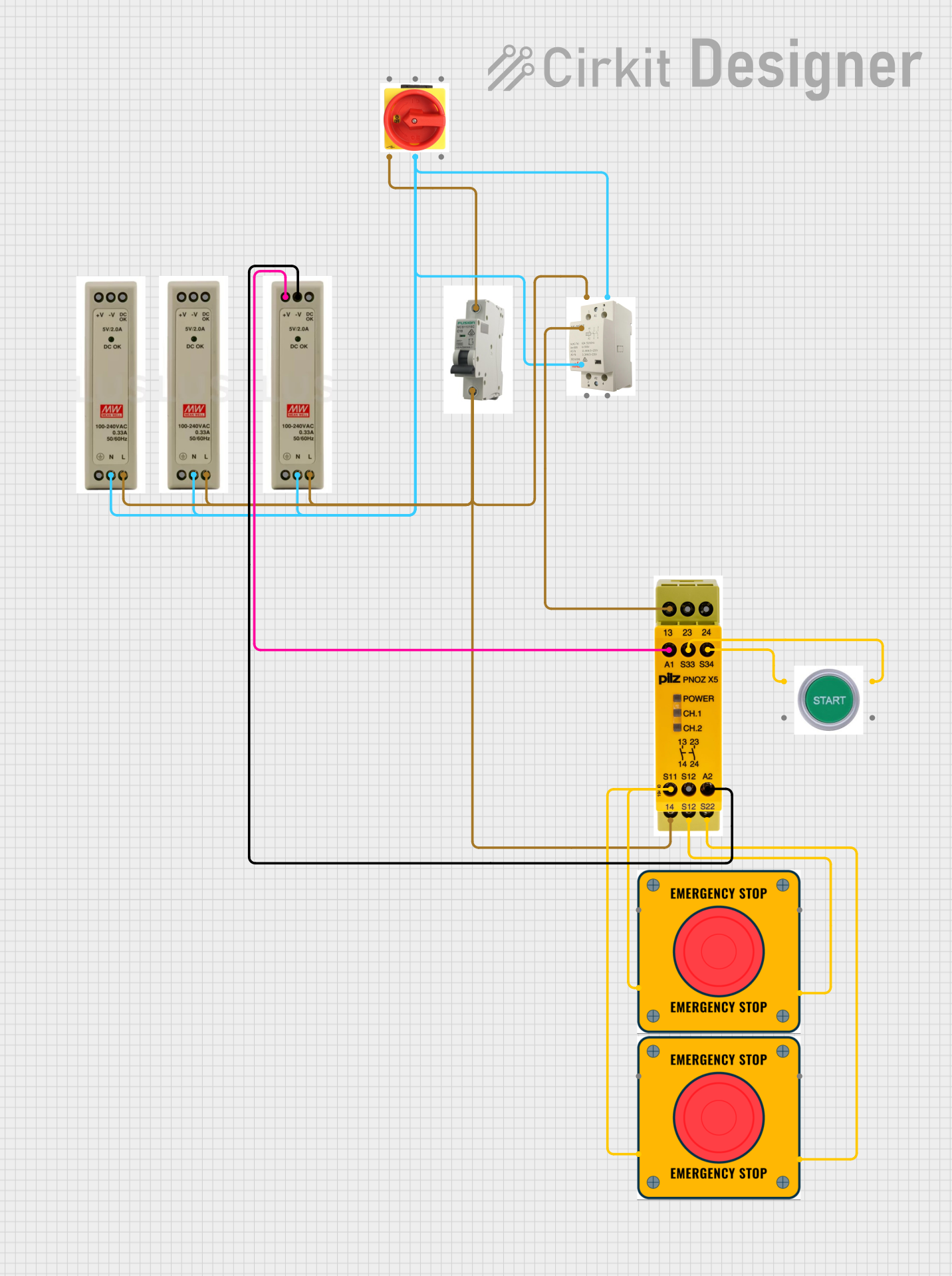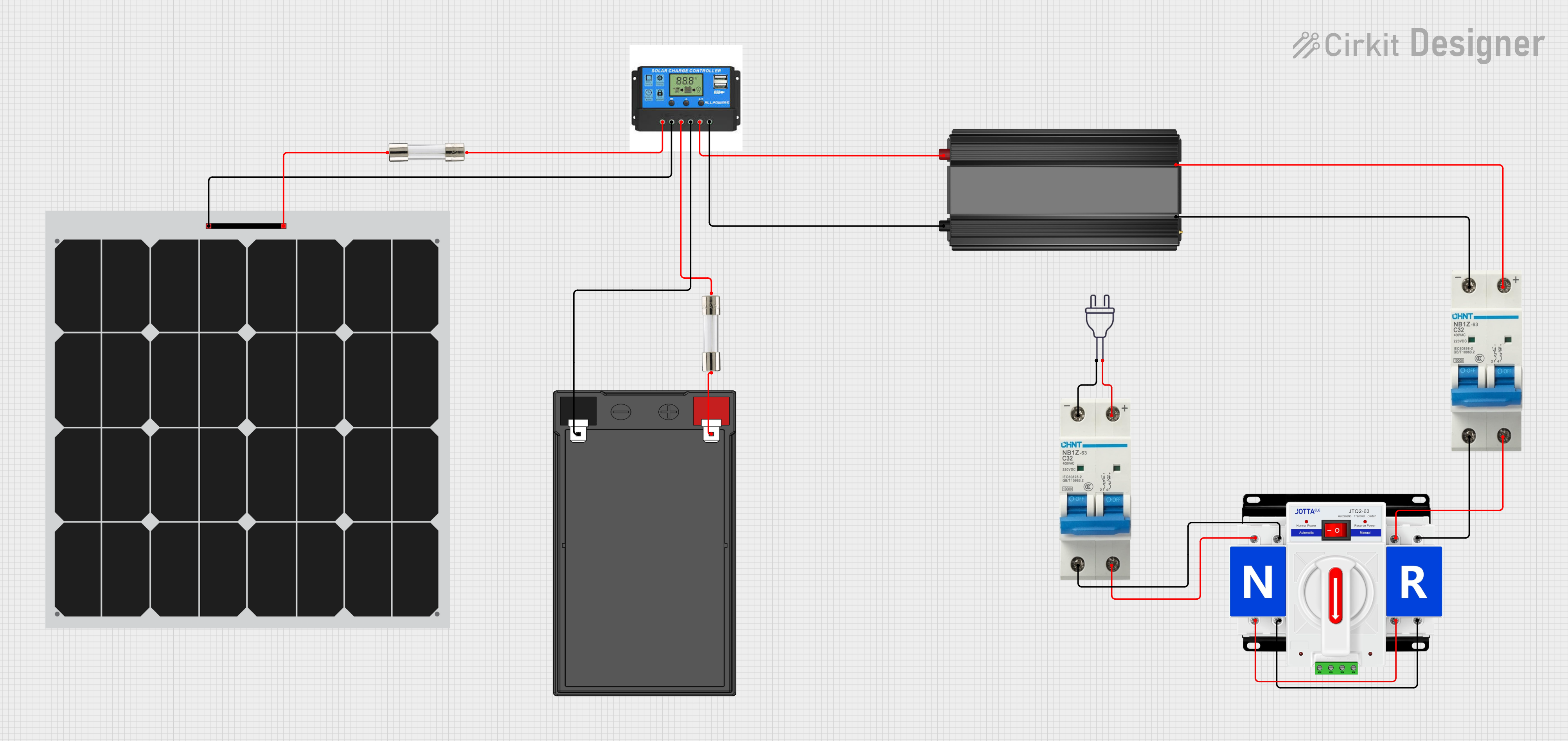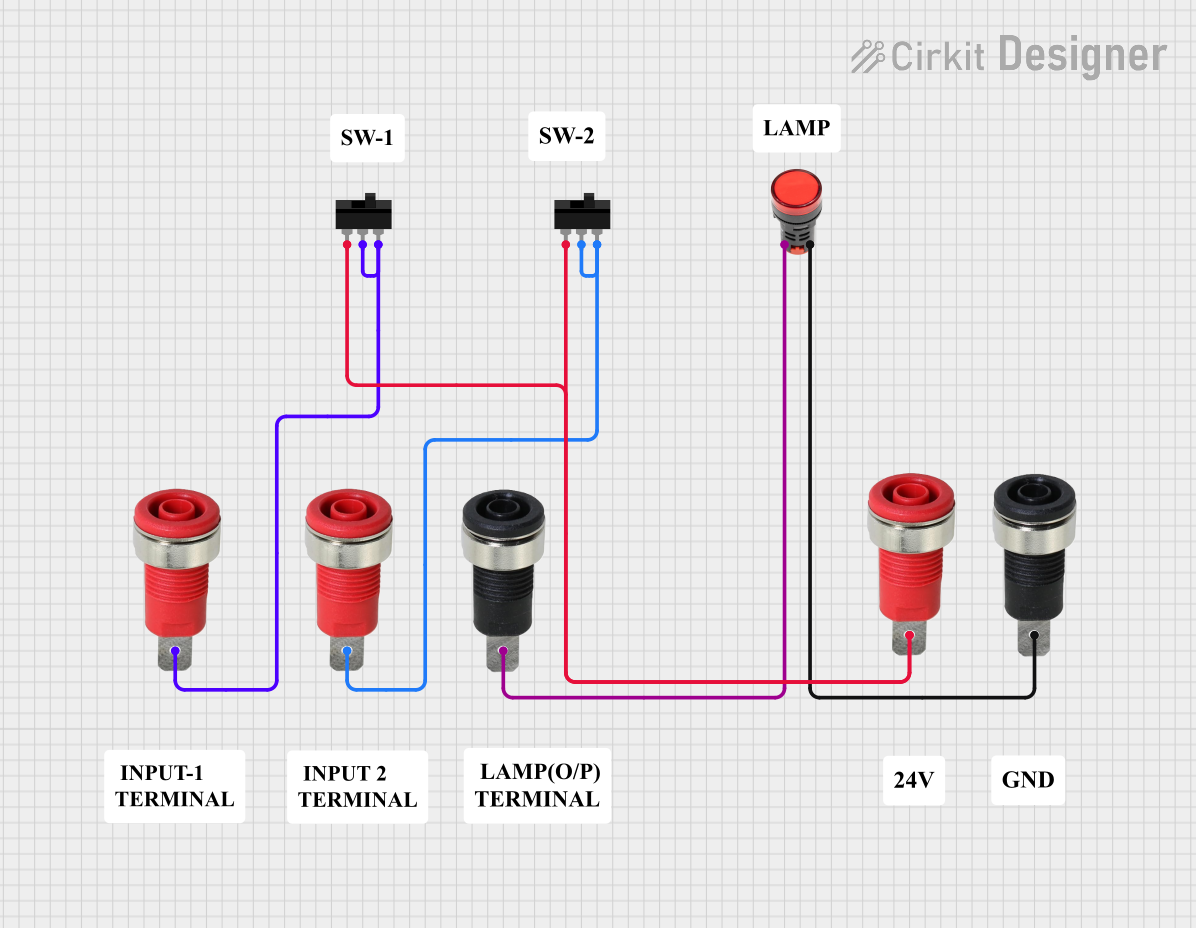
How to Use 2 Pole Circuit Breaker: Examples, Pinouts, and Specs

 Design with 2 Pole Circuit Breaker in Cirkit Designer
Design with 2 Pole Circuit Breaker in Cirkit DesignerIntroduction
A 2 pole circuit breaker is a device designed to protect electrical circuits from damage caused by overload or short circuit. It can interrupt the flow of electricity on two separate circuits simultaneously, making it ideal for 240-volt applications. This type of circuit breaker is commonly used in residential, commercial, and industrial settings to ensure electrical safety and prevent potential hazards.
Explore Projects Built with 2 Pole Circuit Breaker

 Open Project in Cirkit Designer
Open Project in Cirkit Designer
 Open Project in Cirkit Designer
Open Project in Cirkit Designer
 Open Project in Cirkit Designer
Open Project in Cirkit Designer
 Open Project in Cirkit Designer
Open Project in Cirkit DesignerExplore Projects Built with 2 Pole Circuit Breaker

 Open Project in Cirkit Designer
Open Project in Cirkit Designer
 Open Project in Cirkit Designer
Open Project in Cirkit Designer
 Open Project in Cirkit Designer
Open Project in Cirkit Designer
 Open Project in Cirkit Designer
Open Project in Cirkit DesignerTechnical Specifications
Key Technical Details
| Specification | Value |
|---|---|
| Voltage Rating | 240V AC |
| Current Rating | 10A, 15A, 20A, 30A, 40A, 50A |
| Interrupting Rating | 10,000 AIC |
| Number of Poles | 2 |
| Frequency | 50/60 Hz |
| Operating Temperature Range | -20°C to 60°C |
| Mounting Type | DIN Rail or Panel Mount |
Pin Configuration and Descriptions
| Pin Number | Description |
|---|---|
| 1 | Line 1 Input |
| 2 | Line 2 Input |
| 3 | Line 1 Output |
| 4 | Line 2 Output |
| 5 | Ground (if applicable) |
Usage Instructions
How to Use the Component in a Circuit
Identify the Input and Output Terminals:
- Connect the Line 1 and Line 2 inputs to the power source.
- Connect the Line 1 and Line 2 outputs to the load (e.g., an appliance or another circuit).
Mounting the Circuit Breaker:
- Secure the circuit breaker onto a DIN rail or panel mount as per the installation requirements.
Wiring:
- Ensure that the wiring is done correctly and securely to avoid loose connections.
- Use appropriate wire gauges as per the current rating of the circuit breaker.
Testing:
- After installation, test the circuit breaker by turning it on and off to ensure it operates correctly.
- Check for any signs of overheating or unusual noises.
Important Considerations and Best Practices
- Safety First: Always turn off the main power supply before installing or servicing the circuit breaker.
- Correct Rating: Use a circuit breaker with the appropriate current rating for your application to prevent nuisance tripping or insufficient protection.
- Regular Maintenance: Periodically inspect the circuit breaker for signs of wear or damage and replace it if necessary.
- Proper Grounding: Ensure that the circuit is properly grounded to prevent electrical shocks and enhance safety.
Troubleshooting and FAQs
Common Issues Users Might Face
Circuit Breaker Tripping Frequently:
- Cause: Overload or short circuit in the connected circuit.
- Solution: Check the connected devices for faults and ensure the total current does not exceed the breaker's rating.
Circuit Breaker Not Resetting:
- Cause: Persistent fault in the circuit or a defective breaker.
- Solution: Inspect the circuit for faults and replace the breaker if it is defective.
Overheating:
- Cause: Loose connections or an undersized breaker.
- Solution: Tighten all connections and ensure the breaker is appropriately rated for the load.
Solutions and Tips for Troubleshooting
- Visual Inspection: Regularly inspect the circuit breaker for any visible signs of damage or wear.
- Load Balancing: Distribute the electrical load evenly across the circuits to prevent overloading a single breaker.
- Professional Help: If you are unsure about the installation or troubleshooting process, seek help from a qualified electrician.
Conclusion
A 2 pole circuit breaker is an essential component for ensuring electrical safety in various applications. By following the usage instructions and best practices outlined in this documentation, you can effectively protect your electrical circuits from damage caused by overloads and short circuits. Regular maintenance and proper installation are key to the reliable operation of your circuit breaker.